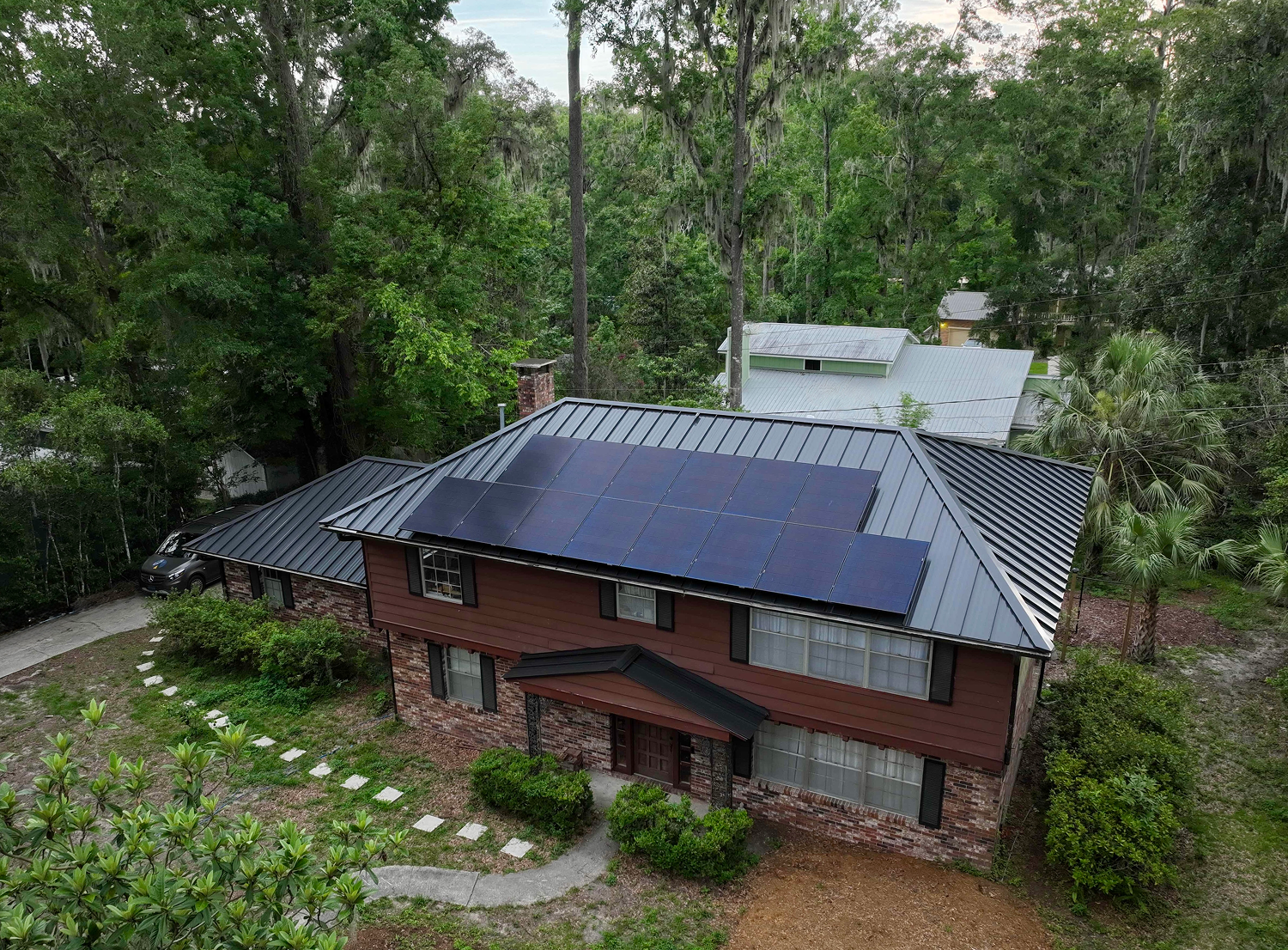The Residential Solar Tax Credit has made solar panels installation significantly more affordable, providing homeowners with an opportunity to save thousands.
With the Solar Tax Credit ending in 2025, homeowners have until December 31, 2025, to take advantage of these significant federal savings. This translates to an average savings of between $9,000–$14,000 on typical residential solar installations.
If you’ve been considering solar panel installation, now is the time to take action. Waiting could cost you thousands of dollars in missed savings.
This article does not provide financial, tax, or legal advice. Please consult your CPA or financial advisor to understand how solar incentives may apply to your specific situation.
What You Need to Know About the Deadline
To qualify for the full 30% federal tax credit, your solar panel system for home must meet specific IRS criteria:
Deadline date: Your solar system must be purchased and paid for by December 31, 2025.
Installation completion: Your system doesn’t necessarily have to be fully installed by this date. As long as you have signed the contract, made the payment, and begun construction or installation efforts in good faith by the end of 2025, you can still claim the credit, even if your installation finishes in early 2026.
What Products Qualify for the Solar Tax Credit?
The federal solar tax credit isn’t limited strictly to solar panels. Eligible equipment includes:
- Solar panel systems for home use (PV systems)
- Solar energy battery storage systems connected to solar panels
- Solar system components, such as inverters, wiring, and mounting equipment
- Labor costs, permitting, inspections, and other associated installation fees
What the 30% Tax Credit Actually Means for Your Wallet
Installing solar on your home is a significant investment—one that becomes far easier to manage thanks to the current Federal Solar Incentives. The most essential incentive available today is the 30% residential solar tax credit.
For most Florida homeowners, the average cost of solar panels for homes is typically between $28,000 and $32,000 before incentives. With the current 30% tax credit, you’re instantly cutting approximately $9,000–$14,000 off your initial investment.
In real-life terms, this means:
- Faster payback: With the federal incentive, your system can typically pay for itself within 8–10 years, compared to 15–20 years without it.
- Greater long-term savings: Your investment starts saving you money from day one by drastically reducing or even eliminating your monthly electricity bills.
- Improved home value: Lower solar installation costs increase your home’s resale value more quickly and affordably.
Should You Rush to Install Solar in 2025?
Yes—and here’s why. As the December 31, 2025 deadline approaches, solar companies across the country are bracing for a surge in last-minute demand. Local installers will quickly book out months in advance, making it harder to schedule your system before the cutoff.
Many systems require 2–4 months from contract to installation—waiting too long could push your project into 2026, making you ineligible for the tax credit.
A rush in demand could lead to temporary spikes in the solar panels for home cost, as equipment manufacturers and suppliers struggle to keep up. We’ve seen this happen in past incentive roll-offs—higher prices, longer delays, and fewer options.
Installing now with the tax credit typically means your system pays for itself in 8–10 years. Without the incentive, your payback time could jump to 15–20+ years, reducing your return on investment significantly.
As demand spikes ahead of the Solar Tax Credit ending in 2025, some low-cost or out-of-state solar companies may overpromise and underdeliver. These installers often cut corners on materials, delay projects, or disappear entirely when schedules get tight.
Deliberate overbooking by unethical contractors (similarly to overbooked flights) will push unsuspecting homeowners into 2026, stripping their tax credit eligibility. It is already becoming a concern, especially as more homeowners race to beat the deadline. Choosing the cheapest quote could leave you with delays, poor workmanship, or worse—missing out on your 30% Residential Solar Tax Credit altogether. Demand guarantees of performance and shared risk where the contractor has a non-performance penalty for delay.
Work with a trusted, local solar company with a proven track record in your area. Ensure they can guarantee your system is started by year-end and assist you in navigating the incentive paperwork correctly.
How to Qualify for the Tax Credit: Simple Step-by-Step Guide
Qualifying for the 30% federal credit is surprisingly simple, as long as you follow the right steps.
Here’s a quick guide to help you secure thousands in savings on your solar panel system for home or battery energy storage system:
✅ Step 1: Confirm your home and equipment qualify
- You must own your home (not rent).
- Eligible equipment includes:
- Solar panel system for home use (photovoltaic)
- Battery energy storage system (must be at least 3 kWh in capacity)
- Inverters, racking, wiring, and other required components
- Labor, permitting, and inspection costs
✅ Step 2: Get a personalized solar estimate
Use our Solar Savings Calculator to estimate your system size, cost, and how much the 30% credit could save you.
✅ Step 3: Choose a qualified installer
Work with a licensed solar contractor who understands current federal rules and can help you meet all documentation and construction deadlines.
✅ Step 4: Sign a contract and make payment before December 31, 2025
To lock in the Residential Solar Tax Credit, you must:
- Sign a binding agreement
- Make a payment or financing commitment
- Begin installation or make “substantial progress” before the deadline
Even if your system is placed in service in early 2026, you’re still eligible, as long as construction started in 2025.
✅ Step 5: Claim the credit using IRS Form 5695
When filing your 2025 federal taxes, use IRS Form 5695 to claim the 30% credit. Be sure to keep all invoices and documentation from your installer.
⚡ Common Questions About the Solar Tax Credit
Is the solar tax credit really ending in 2025?
Yes. Under new legislation, the Residential Solar Tax Credit will end on December 31, 2025. Starting in 2026, homeowners will no longer receive the 30% federal credit for installing a solar panel system for home use.
How do I know if my system qualifies?
To qualify, your system must be a new residential solar panel installation at your primary or secondary U.S. residence. Eligible items include the solar panel system, battery energy storage system (≥3 kWh), and related labor and permitting costs. Use our simple Solar Savings Calculator to find out how much you can save and whether you qualify.
What if my installation isn’t finished by year-end?
You may still qualify for the Solar Tax Credit Ending 2025 if you sign a contract, make a payment, and begin installation before December 31, 2025—even if your system is placed in service in early 2026.
Will solar leasing still offer savings after 2025?
Yes, but the credit goes to the leasing company—not you. Third-party owned residential solar panels may still receive the 30% business tax credit through 2027, and some providers pass those solar savings on via lower monthly payments.



